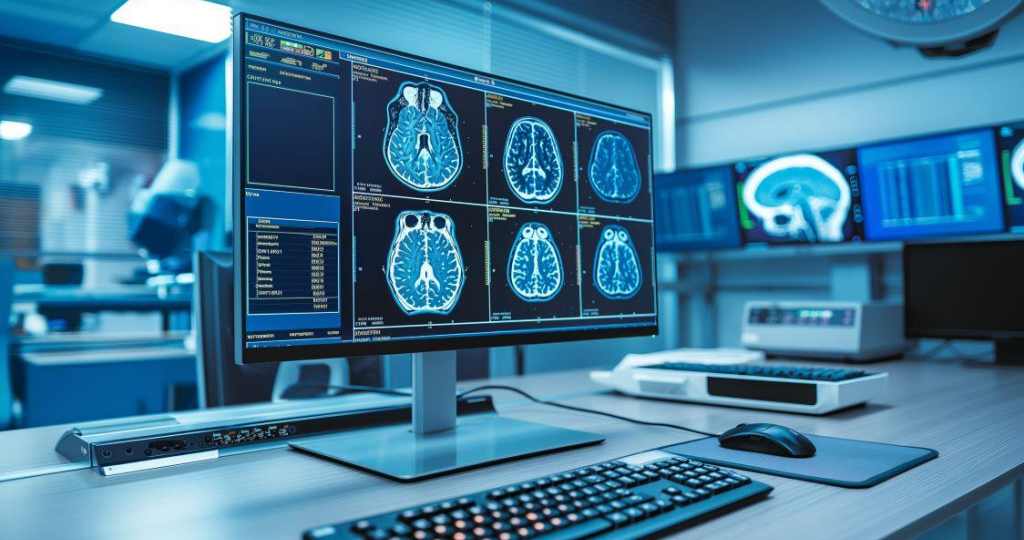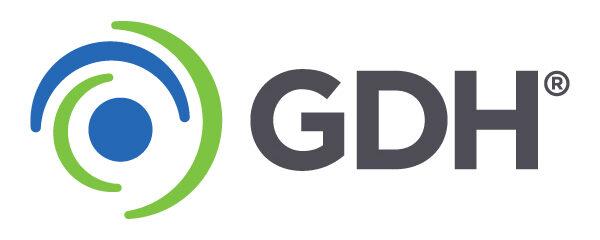The Essential Role of IT in Healthcare Innovation
Key Takeaways
- AI, telehealth, and data analytics are improving patient care and healthcare efficiency.
- Specialized IT professionals are critical to managing these technologies effectively.
- GDH helps healthcare organizations overcome staffing challenges with tailored solutions.
Healthcare is transforming at an unprecedented pace, with technology leading the charge. From artificial intelligence (AI) diagnostic tools to telehealth platforms, IT is improving patient care, streamlining operations, and enabling breakthroughs in how care is delivered.
Yet, these advancements are only as effective as the people behind them. Without skilled IT professionals to implement, manage, and innovate, even the most promising technologies can fall short.
Let’s explore how IT is advancing healthcare, the staffing challenges organizations face, and how GDH helps bridge the gap by connecting healthcare organizations with top-tier IT talent.
How IT Is Transforming Healthcare: Key Trends

Along with improving health care, IT is changing the way care is delivered. Several technologies are driving this transformation.
- AI in healthcare. Artificial intelligence is changing the way healthcare providers diagnose and treat patients. Machine learning algorithms can analyze large datasets, such as imaging scans and medical histories, to identify patterns that physicians might miss.
For example, AI tools help radiologists detect cancer earlier and with greater accuracy, while predictive models assess patient risks for conditions like heart disease. These technologies save lives and reduce healthcare costs by enabling earlier interventions. - Telehealth expansion. Telehealth is bridging the gap between patients and providers by bringing care into the home. Virtual visits have made healthcare more accessible, particularly for rural communities, underserved populations, and those with limited mobility.
Beyond primary care, telehealth is playing a growing role in mental health services and chronic disease management, providing patients with more convenient ways to access care while reducing the need for in-person visits. - Data analytics. Advanced analytics platforms are helping healthcare providers make better decisions and improve outcomes. For instance, predictive analytics can forecast seasonal surges in illnesses like the flu, enabling hospitals to better allocate resources.
Population health tools allow providers to identify at-risk groups and design targeted interventions for chronic conditions such as diabetes.
These technologies highlight the need for highly skilled professionals to design, implement, and manage them effectively.
Challenges in Healthcare IT Staffing
While IT is driving innovation in healthcare, finding and retaining the skilled professionals needed to support these technologies remains a significant challenge for many organizations.
Specialized expertise, talent shortages, and retention issues are some of the key obstacles healthcare providers face.
The Need for Specialized Skillsets
Healthcare IT requires niche expertise. Implementing and maintaining systems such as electronic health records (EHRs), telehealth platforms, and AI-driven tools demands IT professionals with deep technical knowledge and an understanding of healthcare-specific regulations.
For instance, managing EHR systems requires expertise in HIPAA compliance to ensure patient data privacy. Similarly, cybersecurity professionals must be able to protect sensitive health information while adhering to complex regulatory frameworks.
Without this specialized skillset, healthcare organizations risk inefficiencies, security vulnerabilities, and failed technology implementations.
Talent Shortages
Demand for IT professionals exceeds supply. The healthcare sector is competing with other industries for highly skilled IT talent, creating a widening skills gap. Emerging fields like AI, data analytics, and telehealth have intensified this demand, leaving healthcare organizations struggling to attract candidates with expertise in these areas.
For example, positions such as machine learning engineers and cloud architects are critical for building and maintaining advanced systems, but these roles are difficult to fill due to a limited talent pool.
Retention Issues
IT professionals face burnout and high turnover. Once healthcare organizations secure skilled talent, keeping them can be just as challenging. Many IT professionals have transferable skills that are highly valued across industries, leading to frequent job changes for better pay or career advancement.
Burnout is also common in healthcare IT, where teams are responsible for mission-critical systems under high-pressure conditions. High turnover can disrupt operations and delay key technology initiatives.
These challenges emphasize the importance of a strategic approach to IT staffing. Healthcare organizations must not only compete for the right talent but also create an environment that supports long-term employee satisfaction and growth.
With the right approach—and the right staffing partner—healthcare companies can overcome these hurdles.
Real-World Examples: Healthcare IT Staff Drive Better Care

When healthcare organizations successfully implement IT solutions, the impact on both patients and operations can be transformative.
From AI-driven diagnostics to telehealth platforms, these technologies demonstrate how IT improves outcomes and efficiency—when supported by the right talent.
- AI diagnostics at Mount Sinai Hospital. Mount Sinai Medical Center developed machine learning algorithms to predict cardiovascular disease risk. These models analyzed patient data, including medical histories and lab results, to flag potential issues early.
Physicians used the insights to intervene sooner, reducing hospital readmissions and improving long-term patient outcomes.
Skilled IT professionals were instrumental in developing and maintaining this system, showcasing how talent drives innovation. - Telehealth growth at Cleveland Clinic. During the COVID-19 pandemic, Cleveland Clinic rapidly expanded its telehealth services, increasing virtual visits by more than 1,000%. This enabled patients to access care safely and reduced the strain on the hospital’s physical infrastructure.
The IT team played a pivotal role in scaling the infrastructure, ensuring system reliability, and addressing security challenges.
Without experienced IT professionals to support this effort, such rapid and successful adoption would not have been possible.
These real-world examples highlight IT’s central role in improving patient care and operational efficiency.
They also demonstrate how healthcare organizations that invest in the right talent are better positioned to leverage advanced technologies and meet evolving challenges.
IT Healthcare Innovation Depends on Top-Tier Talent
IT is no longer just a tool for managing data or streamlining operations in healthcare. It has become a driving force behind innovation, enabling earlier diagnoses, better patient outcomes, and more efficient care delivery.
But these advancements don’t happen without skilled professionals who understand how to implement and maintain complex systems.
Healthcare organizations need the right IT talent to take full advantage of these technologies.
Why GDH Is the Right Partner for Healthcare IT

Hiring and retaining skilled IT professionals is one of the biggest challenges facing healthcare organizations. However, the right staffing partner can simplify the process and ensure organizations have the talent needed to support their technology initiatives.
GDH specializes in connecting healthcare providers with highly skilled IT professionals who understand the unique demands of the industry.
Here’s what we have to offer healthcare companies:
- Expertise in healthcare IT staffing. GDH has a proven track record of identifying and recruiting IT professionals with the specialized skills required in healthcare.
Whether it’s implementing AI-driven diagnostic tools, managing EHR systems, or scaling telehealth platforms, we ensure that clients are matched with candidates who have the right expertise and experience to meet their needs. - Tailored staffing solutions. Every healthcare organization has unique challenges. We work closely with each client to develop customized staffing strategies that align with their goals.
Whether you need short-term professionals for project-based work or permanent IT team members for long-term initiatives, we can deliver a solution that fits your requirements. - Proven results with measurable impact. GDH has consistently delivered results for healthcare organizations nationwide. Here’s what one of our clients has to say:
“GDH knows our needs and environment. They are great to work with as they listen to what we need and provide the type of candidates for which we are looking.” – Satisfied GDH Client: Government Mental Health Agency
When you partner with GDH, you gain access to a trusted resource for overcoming staffing challenges. With a focus on providing highly qualified candidates and flexible solutions, GDH helps clients stay competitive in a fast-changing healthcare environment.
Ready to build your healthcare IT team? Contact GDH today to learn more about our staffing solutions.








